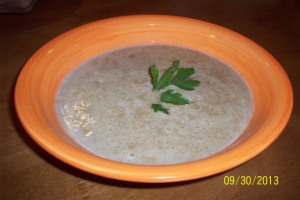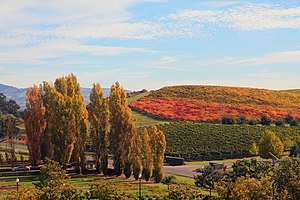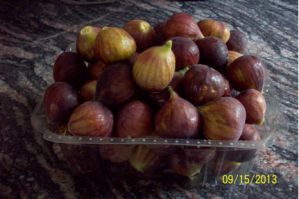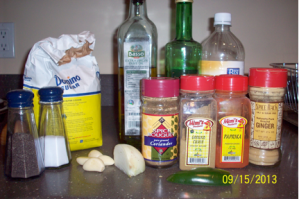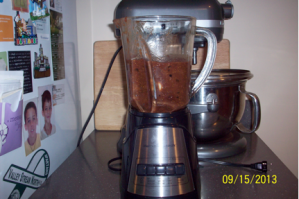The return of football season is, as President Calvin Coolidge put it, a return to normalcy for many of us: the fantasy football leagues, the trash-talking amongst friends, the stats, and of course, what football discussion would be complete without discussing a factor that on occasion eclipses the importance of the game (especially if you are a Jets fan like myself), the tailgate. Even if you are not at the game, though, Sunday football is always an occasion to treat yourself and continue in many ways that great summer barbecue-potluck tradition. We here at LGBG feel exactly the same way. However, despite popular belief, just because we are going big, we do not have to go against the environment. It is actually incredibly easy to make great food for Sunday football and still be eco-friendly. The eco-friendliness of one’s food depends merely on how it is prepared and how it is served. Today I am going to help walk you through making a great recipe, while still doing our duty as citizens committed to a greener world. With that said, let us get down to business so we may move on to the more important part, eating.
Some may call me a heretic, but a great place to start to ensure an eco-friendly recipe is not to bring the grill with you to the parking lot or to turn it on at home. Simply put, burning charcoal is terrible for the environment and for those around you. A natural gas grill would be a better option for those who are environmentally conscious, but the best option is to skip it altogether. This, however, as my recipe will show, does not mean we will not have a mouth-watering dish that will be the talk of the crew (also a great release for your passive-aggressiveness against your neighbor, Steve). Everyone loves his potato salad with bacon in it; however, you know he buys it from that gourmet deli two towns over, but you are too much the man to be petty about these things. You have to beat him with your own two hands. Maybe that way your wife will stop talking about how many more vacations Steve and his family get to take. I don’t know, this is how the suburbs work right: mellow drama, hidden rivalries, and “friendships” based on convenience).
Now that we’ve eliminated the grill, we still need to figure out the specifics of serving our mouth-watering dish. The simple and common answer is to go out and buy a large number of plastic utensils and paper plates. It may be the easy option but the momentary convenience of this option results in both wasted money, as well as a contribution to waste in our landfills (if they even reach them). The eco-friendlier, as well as cheaper option, is to merely bring your own plates and utensils. While it may mean more cleanup at the end of the day, you are doing yourself and the environment a favor.
Now we are getting to the recipe itself, but before we start cooking, we need our ingredients and if we want to eco-friendly we want them local.
In the process of buying local for Sunday football, you can benefit yourself, your community, and the environment: locally grown food tastes better, has a greater and more beneficial impact on your local economy, and reduces your carbon footprint. The longer it takes for food to reach your plate, the less nutritional value it holds for you. Food purchased at big box stores, unless noted as being locally grown, has usually been in cold storage for days. The food you purchase at a local farmers market has typically been picked in the last twenty-four hours, and as such, has a greater nutritional value than food that has been in cold storage. This ties in with the taste factor; locally grown food tastes better. It is picked at the peak of ripeness, and you have it on your plate within a day of that. With regards to produce that has been put in cold-storage, it has most likely been picked while still green and gassed in order to make it ripe. Simply put, fresher is always better. Another great benefit of buying local is the benefit to your local community. By buying local, you are pumping more money into your local economy which will have a greater multiplier effect than if you were to buy from a big chain store. You are supporting a local business whose entire infrastructure is based in your area, and as such, all of their expenditures take place in your local economy; this is as opposed to a big chain store whose produce comes from all over the country and through overhead sends a great deal of the money spent in these stores to areas other than the local economy.
It is also important to recognize the beneficial environmental impact that buying local provides. The ingredients of the average American meal travel 1,500 miles to reach your plate. By switching to one locally grown meal a week, Americans could save 1.1 million barrels of oil. Overall organic local systems leave a carbon footprint equivalent to 40% of that of non-locally grown food through cutting out long transportation, as well as utilizing organic methods. Furthermore, when you buy local, you are promoting more open space in your area. You are giving a viable economic reason to have more space, which is carbon absorbing as opposed to carbon producing high rises or commercial/industrial districts. If you don’t know where to start when looking for locally grown food or farmers markets, http://www.localharvest.org/farmers-markets/ is here to help you.
Lastly, we come to the recipe, which I freely admit is not my own. You can ask the editor (my former roommate), I am the farthest thing on the spectrum from a Chef so I have turned to more capable hands.
Slow Cooker Barbecue Nachos
 Ingredients:
Ingredients:
- 2 chicken breasts, about 3/4 lbs.
- 2-3 tbs chipotle sauce (found in the Hispanic food aisle near the adobo pepper in chipotle sauce – otherwise, just pulse some of those with the sauce and use as a substitute)
- 1/2 cup barbecue sauce
- 1/2 cup black beans, drained and rinsed (I store my extra in the fridge in an airtight container to throw onto salads and in other things throughout the week)
- Tortilla chips
- 1/2 red pepper, sliced
- 1/2 green pepper, diced
- 1/2 red onion, chopped
- 1/2 – 1 cup shredded cheese of choice (just discovered a chipotle Cheddar that I’m kind of obsessed with)
- 4 scallions, chopped, green part only
- 1 jalapeno
- Sour cream, guacamole, salsa
Preparation:
Place the chicken in a slow cooker with chipotle sauce and barbecue sauce. Cover and cook on high for 3 – 4 hours, or until easily shred with a fork. Reduce heat to warm setting, shred chicken, add additional barbecue sauce if desired. Stir in the black beans.
Preheat oven to 425 degrees F. In an oven proof skillet, or on a baking sheet lined with parchment paper, arrange a single layer of chips. Top with 1/2 of the pulled chicken, peppers, onions and cheese making sure to go from edge to edge. Cover with another layer of chips and repeat with the top layer. Cover everything with cheese.
Bake for 10 – 15 minutes until cheese is melted. Sprinkle with scallions and jalapenos. If using a skillet, place a hot mat on the table and serve right from the skillet and serve with sour cream, guacamole, and salsa for dipping.
Enjoy, and remember it is you who makes this eco-friendly and you who empowers the sustainability movement through your wallet! Also, I hope the Jets beat the Bills in Week 3, and I hope the editor allows this through.
Sources:
http://passthesushi.com/slow-cooker-barbecue-nachos/
http://www.localharvest.org/farmers-markets/
http://observer.com/2008/05/the-environmental-benefits-of-organic-and-local-food/
http://www.bidmc.org/AboutBIDMC/EnvironmentalInitiatives/ConserveEnergyandFuel/eatlocallygrownfood.aspx

